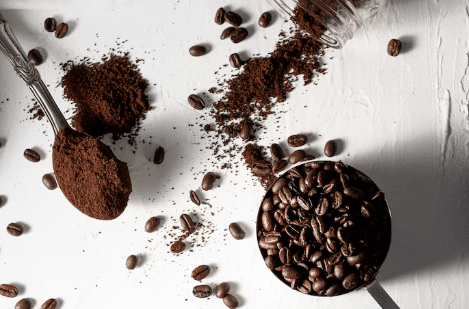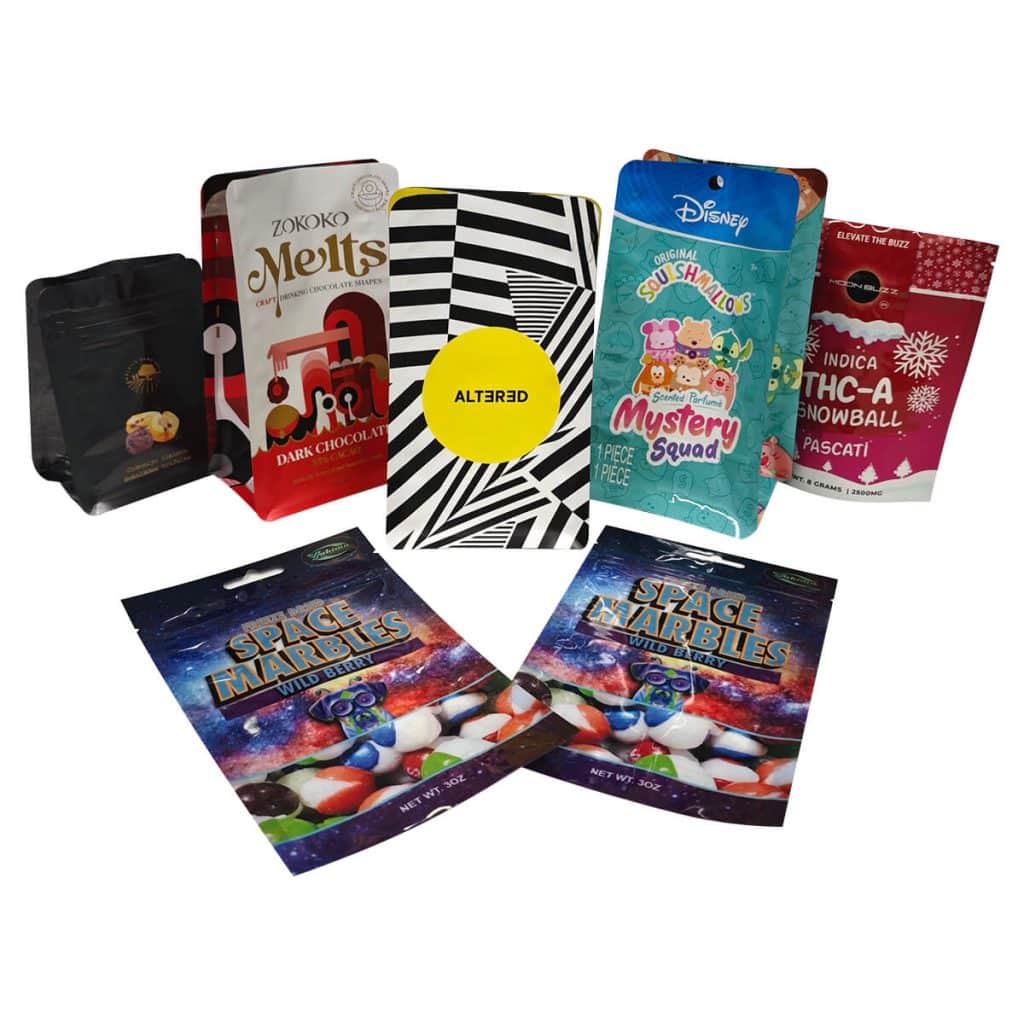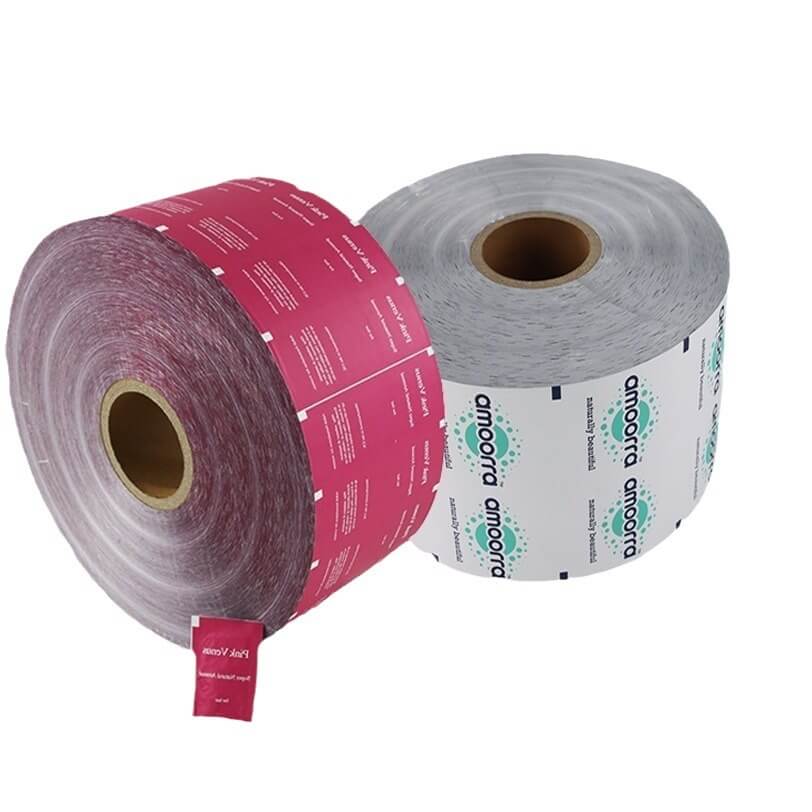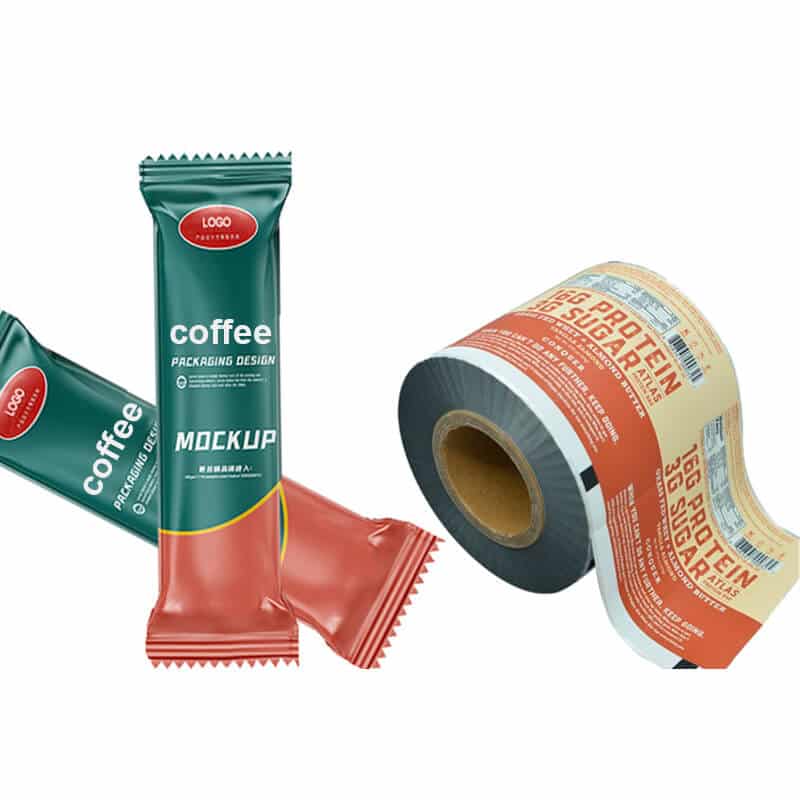When you start making your own coffee packaging, there are several different packaging materials to choose from. We provide packaging for different types of materials, such as MOPP, PET, VMPET, ALU, PA, KRAFT PAPER, CPP, and PE. “They are BPA-free and have food grade certification, which means you can safely use high-quality, clean bags.”. The tank can also include a tear opening and resealable zipper as options, and is easy to seal to prevent tampering. We have compiled commonly used packaging materials for coffee bags for your reference.

BOPP
BOPP film is colorless, odorless, tasteless, non-toxic, with high tensile strength, impact strength, rigidity, toughness and excellent transparency. Its surface energy is low and requires corona treatment before gluing or printing. After corona treatment, it has good printability, and can be printed in color to obtain exquisite appearance effects, so it can be used for composite substrates of composite films, label films, glued protective films, etc.
Its shortcomings such as: easy to accumulate static electricity, poor heat sealing and so on. On a high-speed production line, BOPP film is prone to static electricity, so a static eliminator needs to be installed. The technology of biaxially oriented polypropylene film has become more and more mature, and the application range of the film has become wider and wider. From simple packaging industry to printing, plate making, and some special industries, the application of polypropylene film has rapidly penetrated into the daily life of human beings every field.
Bopp is the abbreviation of biaxially oriented polypropylene, which has high gloss, good printability and good mechanical stability in the production process, so it is usually used as the outer printing substrate of coffee packaging.
For coffee packaging, a matte finish is preferred over glossy packaging, which needs to be achieved using matte BOPP. Note that since the matte finish on matte BOPP is all over, it can only achieve the matte finish of a coffee bag with a full body effect. If you want some glossy highlights on your coffee packaging, then we have to switch to clear PET.
MOPP
MOPP film refers to Matte BOPP Film, which is a matte film, which is what we often call BOPP matte film.
MOPP’s stretching direction is the machine direction, which has high tensile strength, light weight, transparent, non-toxic, moisture-proof and good unidirectional tearing performance.
The matte film is roughened on the surface, and light is irradiated for diffuse reflection to produce a matte effect.
PET
Transparent PET is more popular in the production of coffee bags because it has more advantages than BOPP. Better mechanical strength will lead to better processing stability.
High temperature resistance, able to achieve a clean appearance in bag making and exhaust valve welding. It is harder than BOPP and can present a better standing effect after filling.
As shown in the figure below, a matte ink coating can be applied to the outer side of the transparent PET substrate to achieve a matte effect for full or partial width.
Aluminum Foil
Aluminum foil should be considered as the best barrier to moisture and oxygen and needs to be carefully prevented to maintain the freshness of roasted beans for as long as possible. Therefore, for most high-quality coffee packaging, it is recommended to use aluminum foil coffee bags. Although the price is higher than metal coffee bags, it is worth the money.
Due to the fact that aluminum foil is a thin metal sheet, it has no elongation and heat sealed properties, especially when the aluminum foil is folded multiple times, it may have holes. Therefore, when aluminum foil is used for coffee bag packaging, it must be sandwiched between multiple layers of laminate. For example, adding MOPP or BOPP material to the outermost layer of aluminum foil, and adding PE material to the inner layer of aluminum foil to keep the aluminum foil in the middle position can effectively protect it from multiple folds.
Metallized PET
Metallized PET, commonly referred to as VMPET, is essentially a plastic film that is steamed with a thin layer of aluminum on top of the plastic film. The plastic substrate can be PET film, OPP film, CPP film, PVC film, and nylon film.
Aluminum foil is essentially a kind of metal, which is a thin sheet formed by rolling aluminum profiles and pressing them thin enough. This thin sheet can be used to package the product in soft packaging.
It aims to maintain high barrier performance as much as possible, but its price is far lower than that of aluminum foil. Due to the characteristics of both plastic film and metal, VMPET is a cheap and beautiful packaging material with excellent performance and strong practicality. If you have a limited budget, you can choose a VMPET material.
Kraft paper
Kraft paper bags are made of all wood pulp paper as the base material, and the colors are divided into white kraft paper and yellow kraft paper. PP material can be used to coat the paper with a layer of film to prevent water.
The bag strength can be made into one to six layers according to customer requirements, and printing and bag making are integrated. The opening and sealing methods are divided into heat sealing, paper sealing, and paste sealing.
Kraft paper is often used to create an environmentally friendly effect for coffee bags. Of course, with the help of natural kraft paper, completely compostable coffee bags have been introduced. Advantages of kraft paper coffee bags: convenience, environmental protection, low cost, and waterproof.
Kraft paper bags can be divided into:
A. Pure kraft paper bag;
B. Paper aluminum composite kraft paper bag (kraft paper composite aluminum foil);
C. Woven bag composite kraft paper bag (generally larger bag type);
PET ALOX
PET ALOX is the ultimate product that achieves high barrier properties comparable to metal and aluminum foils, but with a clear and transparent effect.
It is characterized by high temperature resistance, good thermal stability, good tensile strength, and good chemical resistance. Compared to PVDC films, PET ALOX films are more environmentally friendly and have better barrier and printing properties.
It also has better transparency and visibility. It is suitable for food packaging. Its excellent barrier to oxygen and moisture can extend the shelf life of the product. This is essential when customers want to achieve their coffee packaging without any metal or have a transparent front window that allows consumers to see the product inside.
LDPE
LDPE is short for low density polyethylene. It is suitable for various molding processes of thermoplastic molding and has good molding processability.
LDPE is mainly used for film products, but also for injection molding products, medical devices, pharmaceutical and food packaging materials, blow molding hollow molding products, and so on. Sometimes, LLDPE, or linear low density polyethylene, is used in packaging for better sealing purposes. It has the advantages of high strength, good toughness, strong rigidity, heat resistance, cold resistance, and good resistance to environmental stress cracking, tear strength, and acid, alkali, organic solvents, etc.
LDPE or LLDPE is used as an inner layer to enable the foil to form a specific packaging.
Sometimes we find 4 LDPE symbol appears on our coffee packaging bags, representing recyclability and landfill. LDPE (Low Density Polyethylene) is a number 4 encoded plastic commonly used for making shopping bags, dry cleaning bags, and flexible bottle caps. Please recycle the hard plastic labeled # 4, but landfill all plastic films.
PLA Biodegradable
As consumers increasingly focus on environmental protection, complete recycling, and compostability, PLA biodegradable has emerged.
PLA is a new type of biodegradable material made from starch derived from renewable plant resources such as corn. Starch raw materials are obtained through saccharification to obtain glucose, which is then fermented by glucose and certain strains to produce high-purity lactic acid, and a certain molecular weight polylactic acid is synthesized through chemical synthesis methods.
It has good biodegradability and can be completely degraded by microorganisms in nature after use, ultimately generating carbon dioxide and water without polluting the environment. This is very beneficial for environmental protection and is recognized as an environmentally friendly material.
The treatment method for ordinary plastics is still incineration and cremation, causing a large amount of greenhouse gases to be discharged into the air, while polylactic acid plastics are buried in the soil for degradation, resulting in carbon dioxide directly entering the soil organic matter or being absorbed by plants, without being discharged into the air and causing a greenhouse effect. Therefore, PLA made from corn starch can be well used for this purpose.
But the price of PLA is much higher than ordinary plastics, which are typically made from fossil chemicals. At our factory, we have started converting PLA and kraft paper into fully biodegradable coffee bags and supplying them to our responsible customers.
Epilogue
The above is the material we use to produce coffee bags. Our coffee bags are generally made of multiple materials. The intermediate material of a coffee bag is generally composed of aluminum foil, VMPET, or kraft paper, the outer layer is generally composed of BOPP or MOPP materials, and the innermost layer is generally LDPE materials. However, your packaging bag can also be composed of only kraft paper and PLA materials, or entirely LDPE and LDPE materials. Everything depends on your budget and project plan.






